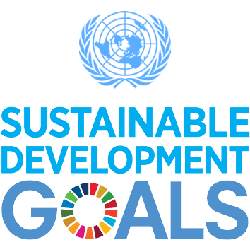
On World Malaria Day in 2016, the University of Pretoria Centre for Sustainable Malaria Control in South Africa released the Malaria Buddy App for smartphones, which provides information on malaria, how to prevent getting the mosquito-borne disease, maps of malaria areas, and what to do if you think you have malaria.
A year later, the app was upgraded, enabling it to utilize real-time geographical data. Today, the Malaria Buddy App can notify users when they are entering malaria risk areas, and they can easily locate the nearest clinic that could treat the disease.
This is only one of many examples of how the smart use of data can help achieve the United Nations (U.N.) Sustainable Development Goals.
In 2015, the U.N. formulated 17 sustainable development goals (SDGs) for the period through 2030. The goals includes eliminating poverty and hunger, providing good health and education for all, and equal treatment regardless of gender, ethnicity, or socio-economic status. In December 2018, management consulting firm McKinsey published the report “Notes from the AI frontier: Applying AI for Social Good,” which offers many more examples of how data and artificial intelligence (AI) can help accomplish the SDGs.
The example of the Malaria Buddy App was offered up by Stephanie Burton, vice principal and professor at the University of Pretoria, at the American Association for the Advancement of Science (AAAS) 2019 Annual Meeting in Washington, D.C., during the session ‘The Digital Agenda: Supporting the Sustainable Development Goals’.
Heide Hackmann, CEO of the Paris-based non-governmental International Science Council, emphasized during a keynote address at AAAS 2019 that the 17 SDGs are interconnected and interact with each other. “In fact, we have one hyper-complex system with 17 facets. When creating new digital tools to address the SDGs, we need to develop a holistic, integrated approach.”
In the example of the Malaria Buddy App, this could mean the app developers in the future might incorporate data into the app related to climate change patterns, population movements, animal movements, and animal use in agriculture.
However, Hackmann warned, “We are still not able to link, integrate, and analyze data from different disciplines, particularly from across the natural and human sciences. Different disciplines use different standards in characterizing, storing, and accessing data. Different vocabularies and ontologies are used that make interoperability between data sets difficult, if not impossible.”
In an effort to overcome these barriers, the International Science Council is supporting work on generic approaches to data integration, Hackmann said. “We are currently testing this approach in the fields of infectious diseases, disaster response, and resilient cities.”
Another keynote speaker at AAAS 2019, Anna Scaife, a professor of radio astronomy at the University of Manchester (U.K.), made the case that designing an e-infrastructure for computing, storage, and networking, should be an integral part of the way we approach the SDGs. Said Scaife, “In my day-to-day job I am designing the computer storage for the European regional center of the Square Kilometer Array, the world’s largest radio telescope, that is being built in South Africa and Australia. So, e-infrastructure is my job and I know how important it is. Data from the Square Kilometer Array are so big that IBM refers to them not as ‘big data’, but as ‘extreme data’; we are talking about zetabytes of data. But where scientific data lead, social data will follow.”
Apart from her astronomical work, Scaife has developed a strong interest in the social applications of big data. She is heading up the Development in Africa with Radio Astronomy (DARA) Big Data program, a Data Science Network between the U.K. and Colombia created to advance research and training in big data science; not just for big data in astronomy, but also for big data from the agricultural and health arenas. “I traveled to Washington straight from Colombia, where we were using satellite data to monitor sugar cane crops.
“Different disciplines can learn from each other about data handling, data science, and data analytics. I consider the zero-hunger goal as the low-hanging fruit of the SDGs: we can use Earth observation data for crop yields, we can track crop diseases, and we can integrate data from different disciplines to develop a holistic approach to understand crop cycles.”
Scaife mentioned the African Open Science Platform and the European Open Science Cloud as good examples of international cooperation to develop an e-infrastructure that can support the SDGs. “However, putting hardware on the ground and hoping people will use it is not the right approach. We have seen many examples where that fails.
“E-infrastructure is not just about computing, storage, and networking. E-infrastructure is also about people: people that take care of data curation and people that are properly trained. The human factor and the technological factor should be developed in parallel.”
Bennie Mols is a science and technology writer based in Amsterdam, the Netherlands.




Join the Discussion (0)
Become a Member or Sign In to Post a Comment